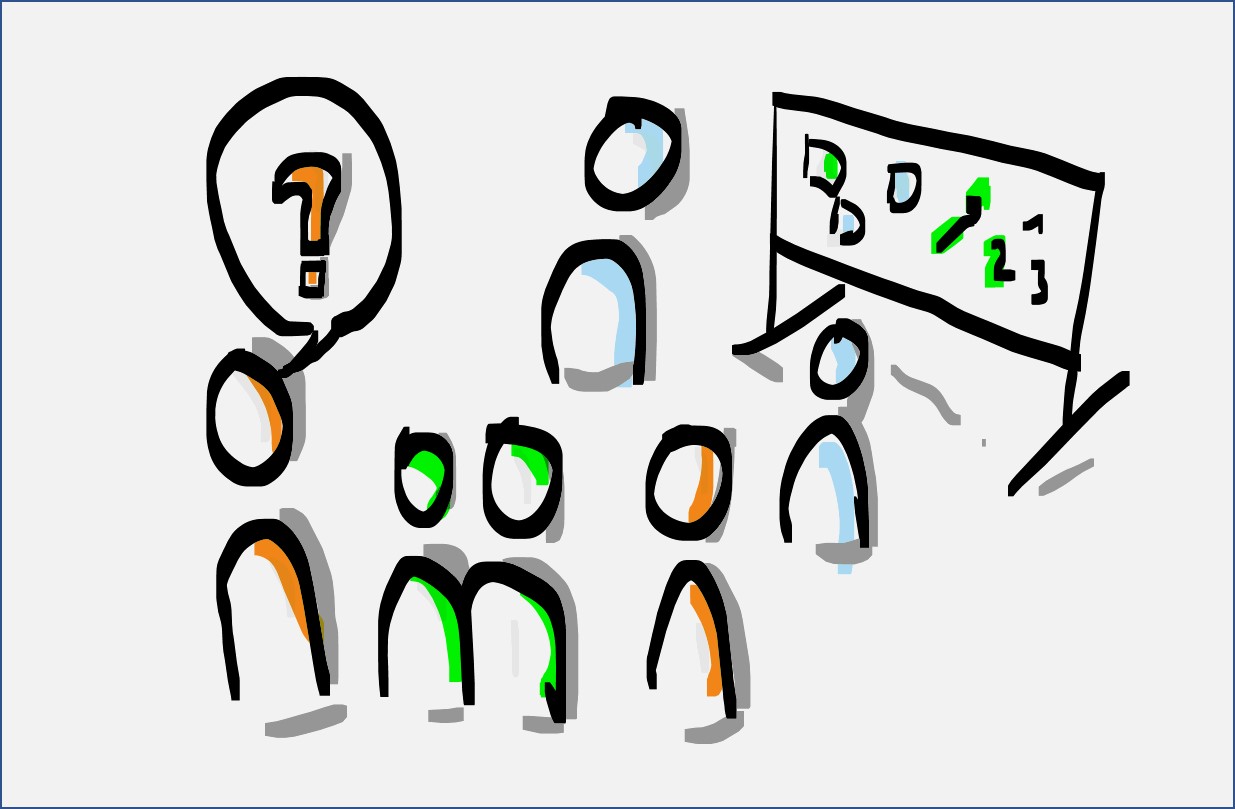You like or should work in an Agile way? Now you still have a few questions? You are not alone. For example, I was asked the other day:
Which is the first step into agile working forms that I take alone, and which one that I take with others?

Firstly: For you personally
Understand that AGILITY IS A TEAM SPORT. In other words, even if you know as much as you can about Agile, you won’t get far on your own despite all your knowledge and skills.
The best fundamental reading I know on the subject of Agile,
(I repeat myself, I know): The Scrum Guide. It explains the game, the team formation and the basic tactics – to stay in the image of team sports.
 From my experience, that’s enough. That’s all it really needs (for now). However, in case you see it differently, i.e. if the Scrum Guide is not enough for you, you are welcome to read the Scrum Guide again. And then, if necessary, also other literature, e.g. about Kanban (references below).
From my experience, that’s enough. That’s all it really needs (for now). However, in case you see it differently, i.e. if the Scrum Guide is not enough for you, you are welcome to read the Scrum Guide again. And then, if necessary, also other literature, e.g. about Kanban (references below).
But then you should as soon as possible
Second: Start by doing regular retrospectives together

- What has gone well in terms of organisation SINCE THE LAST RETROSPECTIVE? What gone not so well?
- What do we learn from this in general? What is the learning for our planning of the THE NEXT COUPLE OF WEEKS?
- What doable measure can we think of for the next few weeks that will make us a little better?
During the regular retrospective, it quickly becomes apparent how you can improve as a team, what you are still lacking and which methodological tools can help you from the agile (or other) practices.
Important: If your team has a certain maturity – by this is meant that most of them have already realised that things CAN’T go on as before – then you are not just on the way to BECOMING more Agile. Then you ARE already.

Of course, you can also
Disadvantage: You have to reckon with everything positive and negative that you know from other change initiatives. And these are often not only cheers, but also the (basically reasonable) general question: “What is this all about? Don’t we have more important things to do?”
 Even if your answer to this question in general is ” No”
Even if your answer to this question in general is ” No”
Literatur
- Anderson, David J.; Reinertsen, Donald G: Kanban. Successful Evolutionary Change for Your Technology Business.
- Appelo, Jurgen: How to Change the World.
- Laloux, Frederic: Reinventing Organizations. A Guide to Creating Organizations. Inspired by the Next Stage of Human Consciousness.
- Rodehack, Edgar: Die acht Schritte eines Sprintübergangs.
- Sutherland, Jeff: Scrum. The Art of Doing Twice the Work in Half the Time, New York, 2014. (Deutsch: Die Scrum-Revolution)
- Schwaber, Ken; Sutherland, Jeff: Scrum Guide
- Wohland, Gerhard; Wiemeyer, Matthias: Denkwerkzeuge der Höchstleister. Warum dynamikrobuste Unternehmen Marktdruck erzeugen.
 Even if your answer to this question in general is ” No”
Even if your answer to this question in general is ” No”